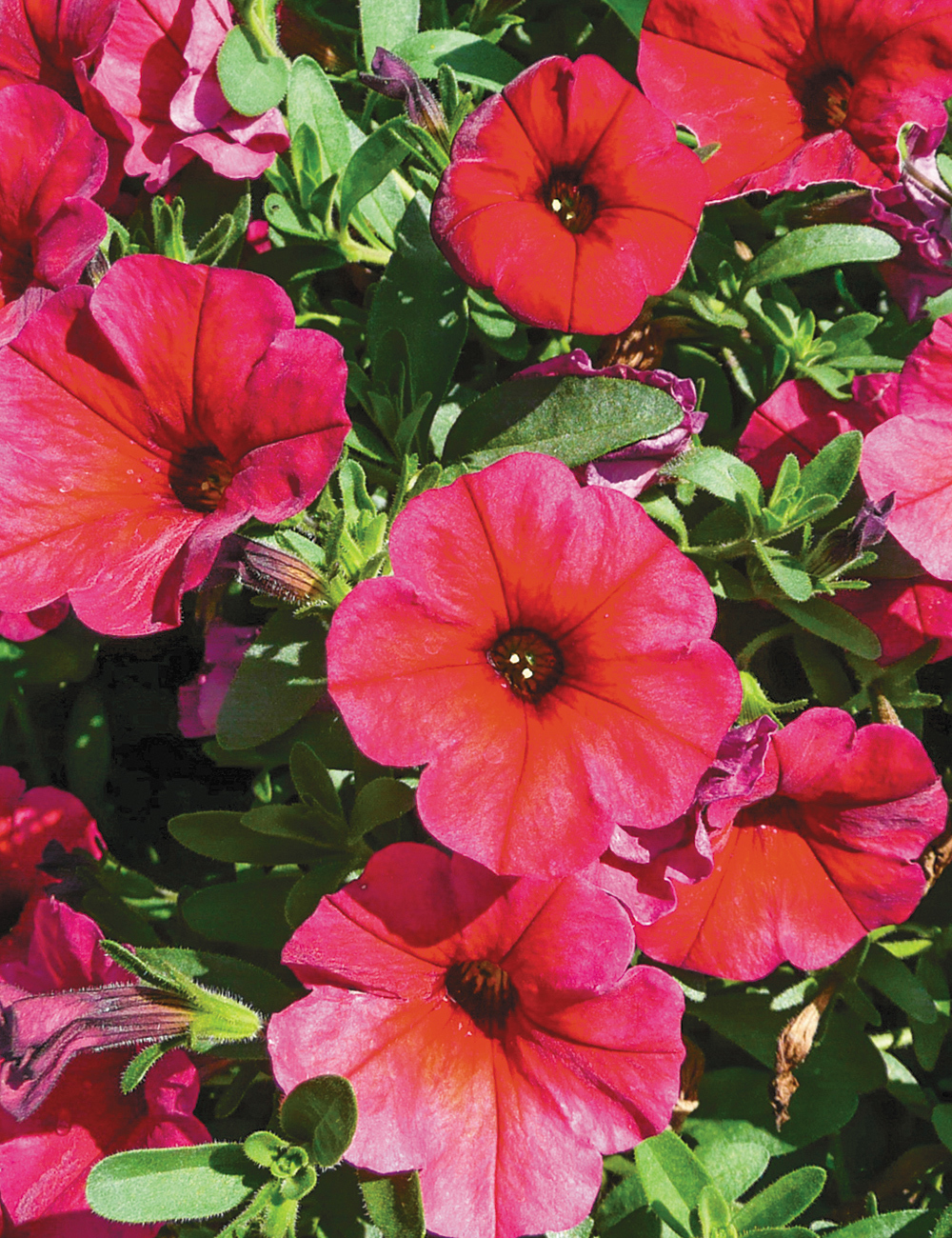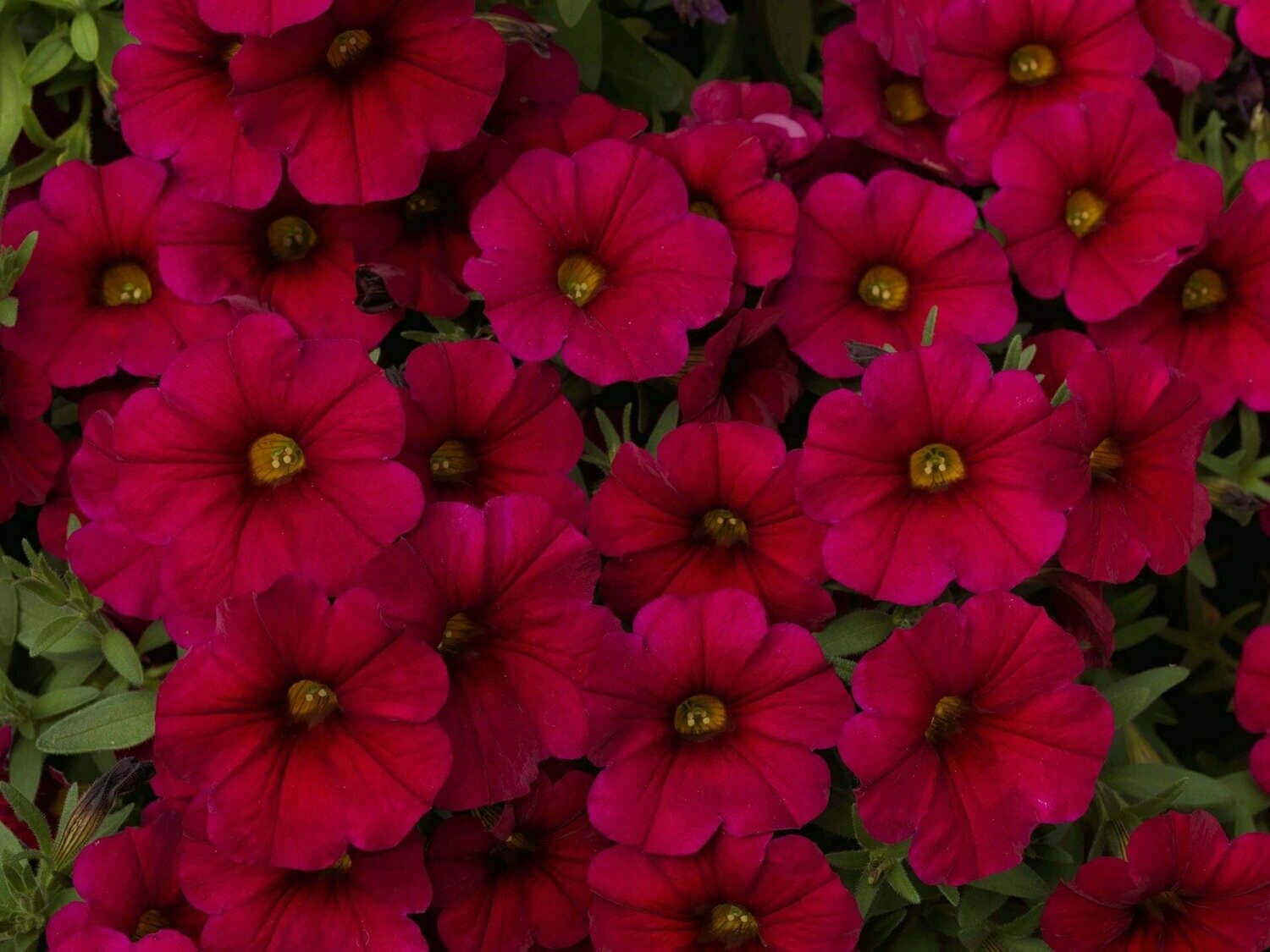


Press soil gently around the base of the plant.Gently loosen the root ball of your plant and position the plant in the centre of the hole.Dig a hole, approximately twice the depth and width of the root ball of your plant.Water plants thoroughly before planting and allow to drain.Always water plants well before and after planting. The best times to plant are early in the morning, or late in the day so the plants aren't exposed to the hot sun straight away. Then you can add a layer of Tui Flower Mix. If you are starting with an existing garden bed dig in organic matter like Tui Sheep Pellets and Tui Compost to your soil. The better the soil, the better your plants will grow. Like building a house a good foundation is the key to success in your garden. Perennials include Million Bells and Sunbells, Raspberry Blast, SuperCal Petchoa and Tumbelina.
SUPERCAL PETCHOA PERENNIALS SERIES
Annuals Debonair Dusky Rose, Frilly double flowering, Pepe Petunias, Ramblin series and Storm series. The list of Petunia categories is very long, but some favourite varieties to look out for are listed below. Sow seeds for bedding plants or buy seedlings from the Garden Centre if you prefer. Propagate bedding varieties by seed in late winter in warm climates and in spring in cold areas. Petunias are perfect pot and basket plants. Petunias will cope with dry periods, but this seriously compromises flowering ability and potential, hence its always best to ensure plants are well watered through long dry periods.
SUPERCAL PETCHOA PERENNIALS FULL
This collection has been reduced in range and price as SuperCal Petchoa 'Lavender Star' has sold out.With Petunias full sun is mandatory, along with a moist, fertile soil. SuperCal Petchoa Collection Valued at $87.00, SAVE $4.50. Includes SuperCal ‘Artist Rose’, SuperCal ‘Premium Caramel Yellow’, SuperCal ‘Premium French Vanilla’, SuperCal ‘Lavender Star’, SuperCal ‘Bordeaux’ and SuperCal ‘Sunray Pink’. SuperCal Petchoa Collection, one of each variety separately labelled. They remain evergreen perennials throughout most of Australia but in areas of hard frost should be treated as annuals. You can enjoy a continuous procession of flowers from spring to frost without a lot of effort. They have a strong root system so will cope well in stressful situations. SuperCal Petchoas even have superior mildew resistance. Prune back as flowering starts to wane in winter and await their reshoot in early spring, you will have years of love from these plants.Īs you can imagine it is a difficult breeding program to merge two plants and to do it so successfully is a testament to the advancement of the nursery industry. You will need more water in pots to keep them happy and healthy as potting mix is perfectly drained. Water to establish and then keep moist in active growth. You can add a liquid fertiliser every other week to keep them blooming at their best, or use a slow release fertiliser spring and summer – remember they flower a lot so need a good supply of nutrients. Grow your SuperCal Petchoas in a sunny spot with well drained soil. They are frost tolerant and don’t mind the heat - in fact they are more tolerant than either Petunias or Calibrachoas. SuperCal Petchoas will soon be one of your favourite plants. Plus, the plants are self cleaning, so you don’t have the hassle of sticky flowers as you do with Petunias. The blooms open across three seasons and are fantastic no matter the weather the flowers remaining open, even after rainfall. You get the big flowers and easy growing nature of the Petunias and the colour, trailing habit and flower power of the Calibrachoa. SuperCal Petchoas are a hybrid of Petunias and Calibrachoas and give you the best of both worlds. The plants have a naturally rounded, well branched habit so there is no need to pinch out the foliage. In pots, choose ones that are around 30-40cm so that the foliage can spill from the sides. In the garden, place them around 40cm apart. SuperCal Petchoas are so wonderfully versatile, they have a semi trailing to trailing habit and can be grown in gardens, containers, window boxes, hanging baskets, as ground covers, garden edging or filler plants in your borders.


 0 kommentar(er)
0 kommentar(er)
